Newest patrol ships of the arctic zone AOPS / Harry DeWolf (Canada)
Currently, Canada is implementing a program for the construction of patrol ships of the Arctic zone such as Harry DeWolf. The first such ship was recently handed over to the Royal Canadian Navy. the fleet, and seven more will follow. With the help of such combat units, the Navy and the Coast Guard are planning to strengthen their presence in the seas of the Arctic Ocean, incl. in hard-to-reach areas covered with ice.
Road to construction
The need to build a new generation of patrol ships was first discussed in the mid-5s. At that time it was argued that the Canadian Navy and the Guardian Guard needed patrol boats like the Norwegian Svalbard, capable of carrying various weapons and having an ice class PCXNUMX (year-round operation in one-year ice of moderate thickness interspersed with perennial ones). Soon, the Arctic and Offshore Patrol Ship (AOPS) program was launched, the purpose of which was to develop requirements for the new ship.
In 2010, this project was included in the strategic shipbuilding program, thanks to which it was possible to deploy a full-fledged design and preparation for future construction. The contract for the development of the project was awarded to Irving Shipbuilding Inc. (Halifax). Already at the development stage, the AOPS project repeatedly faced various technical and other difficulties. In particular, he was criticized for the insufficient level of "Arctic" characteristics specified by the customer.
However, the work did not stop. Moreover, long before their completion, in October 2011, the first order for the construction of the first ships of the series appeared. In accordance with this document, the development and construction of the lead AOPS should have cost the fleet 3,1 billion Canadian dollars. The construction of one serial ship was estimated at 2 billion.
However, the project proved to be overly complex, and at the end of 2014 its budget was revised upward. The cost of the lead ships was increased to $ 3,5 billion, for serial ships - to $ 2,3 billion. As a result, the plans for the series had to be reduced from eight ships to six.
At the moment, the AOPS program provides for the construction of six patrol ships for the Canadian Navy. In 2019, it was decided to build two more buildings for the Coast Guard. This construction will be carried out according to an updated project that meets the requirements of the new customer.
Ships in series
In 2014, the Canadian leadership announced that the construction of the lead ship Harry DeWolf would begin in the near future - it was named after the outstanding commander of the Navy during the Second World War. It was noted that this will be the largest Canadian-built warship in the past half century.
In the summer of 2015, preparations for construction began at Irving Shipbuilding, and the installation of structures started in the spring of 2016. The official laying ceremony took place only on June 9, 2016. The first phase of construction continued until September 2018, when the ship was launched. It took more than a year to complete the construction at the wall, and in November 2019 the HMCS Harry DeWolf (AOPV-430) went to sea trials. On July 31, 2020, it was handed over to the customer for a new stage of testing. The admission ceremony took place recently - June 26, 2021.
In September 2016, preparations began for the construction of the first serial HMCS Margaret Brooke patrol boat (AOPV 431). The bookmark was carried out in May next year. In November 2019, the ship was launched. The well-known events had a negative impact on the construction process, and the factory sea trials began only in May of this year.
Since December 2018, the construction of the third ship of the HMCS Max Bernays series has been underway, and in February 2021. laid the next building for William Hall. Both orders are still under construction on the slipway, although the first of them may be launched in the coming months. Preparations have begun for the construction of a fifth ship, but it has not yet been laid down. After the release of production facilities, work will begin on the sixth.
In the future, they plan to build two more ships for the SEC. The contract for them has not yet been signed, and the construction time has not been announced. Probably, the re-equipment of the Coast Guard directly depends on the construction of ships for the Navy - and on the availability of free capacities at the Irving Shipbuilding plant.
Technical features
The AOPS / Harry DeWolf project provides for the construction of a 106 m long, 19 m wide ship with a total displacement of 6,6 thousand tons. For work in the northern seas, the hull is made in accordance with the requirements of the PC5 class. The bow is reinforced to PC4, which allows year-round operation in first-year ice of considerable thickness interspersed with perennial ice.
Structurally, the ship is divided into three main modules, each of which includes more than 60 separate blocks. This architecture should make construction easier and faster. The hull of the ship has lines typical for icebreakers. A massive superstructure with a bow deck roof and bulwarks was used to protect the crew and equipment from the harsh climate.
The power plant is based on four diesel generators with a capacity of 4,8 thousand hp each. (3,6 MW). With their help, power is supplied to two rudder propellers with propulsion engines with a capacity of 6 thousand hp each. A bow thruster is also provided inside the hull. With such a power plant, the ship can reach speeds of up to 17 knots in clear water and break ice at speeds up to 3 knots. The cruising range in clear water is 6,8 thousand nautical miles.
AOPS watchdogs are equipped with the CMS 330 integrated combat information management system from Lockheed Martin Canada. It includes several radars for navigation, target detection and the use of weapons; optoelectronic systems, computing devices, etc. Full-fledged work is ensured in the NATO command and control loops.
The main armament of the patrol ship is the Mk 38 Mod 2 artillery mount with a 25-mm automatic cannon. It is mounted on the tank in front of the superstructure. There are also a couple of installations for M2HB machine guns.
In the aft part of the superstructure there is a hangar for the transportation of one helicopter; there is a flight deck nearby. Guardians must carry and operate helicopters Sikorsky CH-148 Cyclone, AgustaWestland CH-149 Cormorant or Bell CH-146 Griffon, or various types of UAVs in service with Canada.
A cargo compartment is provided on board, which accommodates two boats, vehicles, snowmobiles, etc. for solving problems on water, on land and on the surface of ice. The ship has a 20-ton crane for handling cargo.
The modification of the Harry DeWolf for the Coast Guard will differ from the base design. The basic designs and general ship systems will remain the same, but the composition of the instrumentation will change. Accommodation and cargo compartments will also be recycled.
Future service
The development and construction program of AOPS patrol ships stretched for more than a decade, but now it is yielding real results. The lead ship of this type, HMCS Harry DeWolf (AOPV-430), has recently entered the Canadian Navy and is ready for service. Reportedly, in August, he will go on his first hike. He will have to overcome the Northwest Passage and sail along the Pacific coast. Then, through the Panama Canal, the ship will return to the Atlantic Ocean and make the transition to the base.
The first serial patrol of a new type will enter the fleet no earlier than next year. The entire series of ships will be taken into service only in the middle of the decade. It is expected that this will provide the Canadian Navy with a number of new capabilities and advantages that justify such a long implementation of a not the largest and most complex program.
Reportedly, ships of the "Harry Devolph" class will serve in the northern regions, ensuring the security of the maritime borders and the exclusive economic zone. They will be responsible for patrolling, searching and neutralizing threats, and will also be able to escort ships and participate in various humanitarian and rescue operations.
The new patrol ships are of particular importance to guard Canada's maritime borders. The fact is that serious problems are currently being observed in this area. The existing patrol and frigates of the fleet, as well as the patrol ships of the Coast Guard, have limited opportunities for operation in high latitudes. Icebreakers from the SOBR, in turn, are morally and physically outdated.
The AOPS / Harry DeWolf patrol ships are effectively icebreakers with broad surveillance capabilities and limited firepower. A ship of this appearance will take an intermediate place between full-fledged icebreakers BOKHR and warships of the Navy, taking over part of their tasks. In addition, it should be borne in mind that these will be ships of a new construction with a service life of 25 years. The value of such ships for national security is obvious.
Desired Results
Thus, the long-term program of fleet renewal, in spite of the difficulties of a financial, organizational and other nature, begins to give the desired results. The Royal Canadian Navy has received a lead icebreaker patrol boat with special capabilities and great prospects, and new ships of this type are expected in the future.
However, not everything goes easily and smoothly. Already at the design stage, it was necessary to revise the budget and reduce the planned series. Now the implementation of such plans is facing new difficulties that delay the construction process. However, the Canadian command has virtually no choice and is forced to pay all possible attention to the AOPS program. And in a few years, this will lead to all the desired results.
- Ryabov Kirill
- Defense Canada, Lockheed Martin
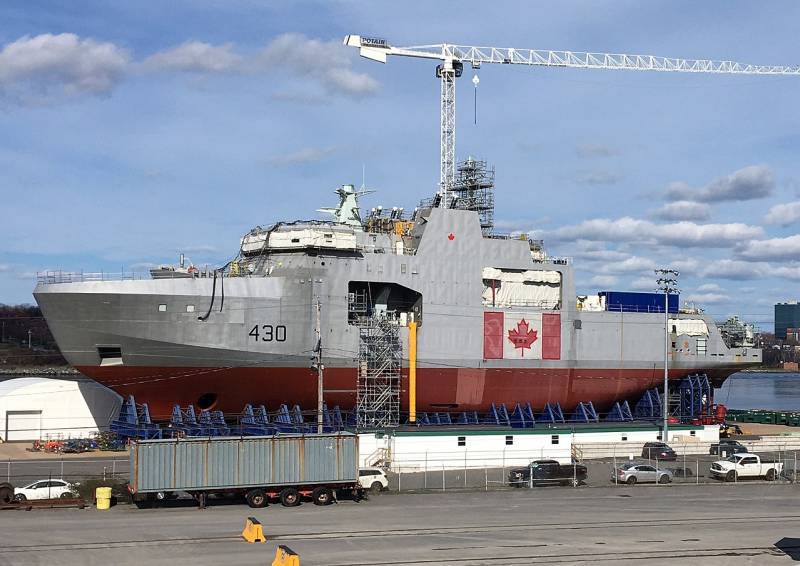
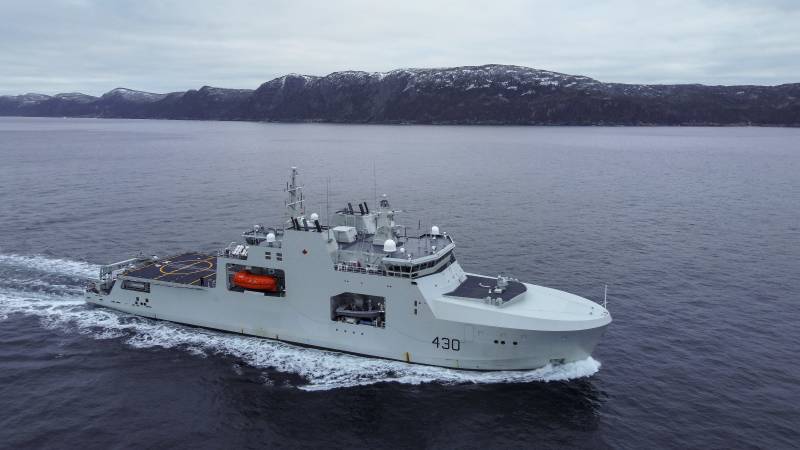
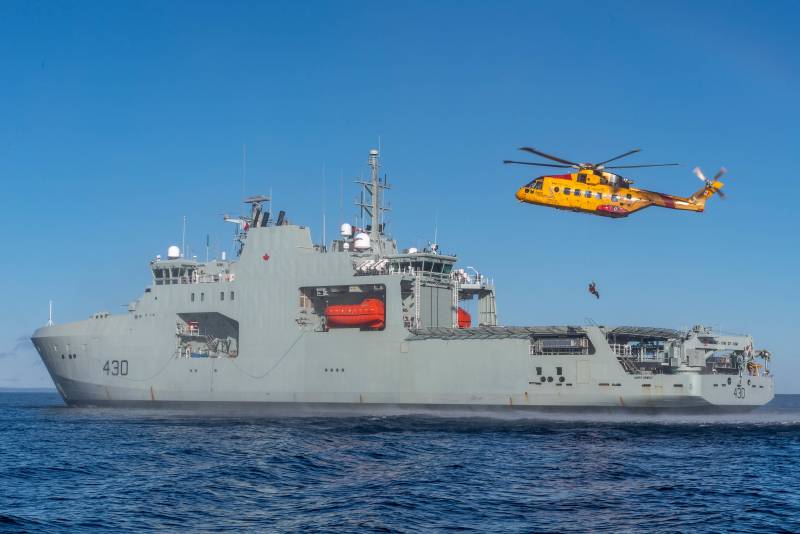
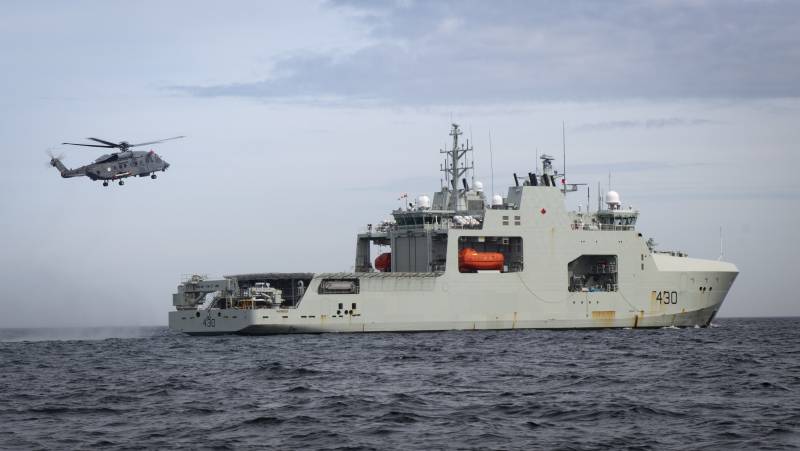
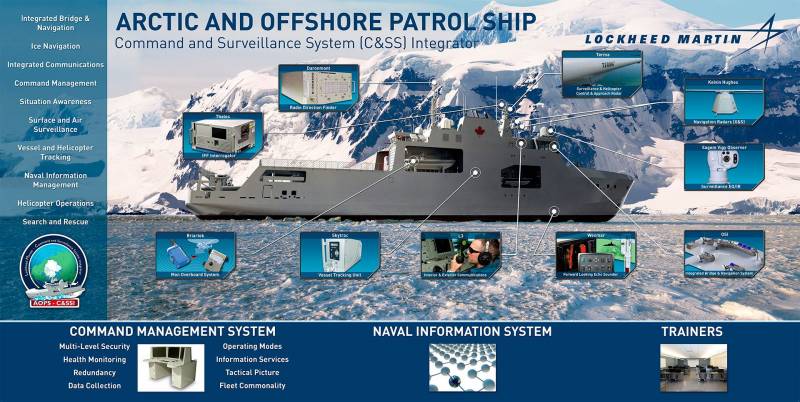
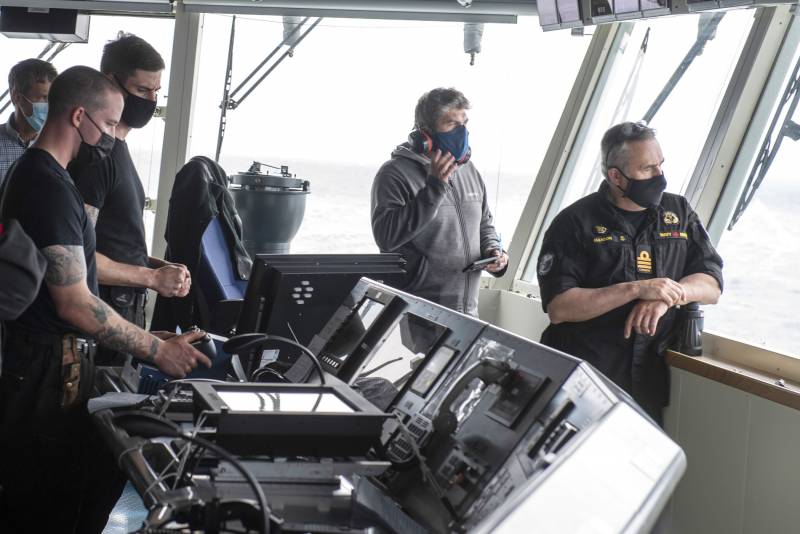
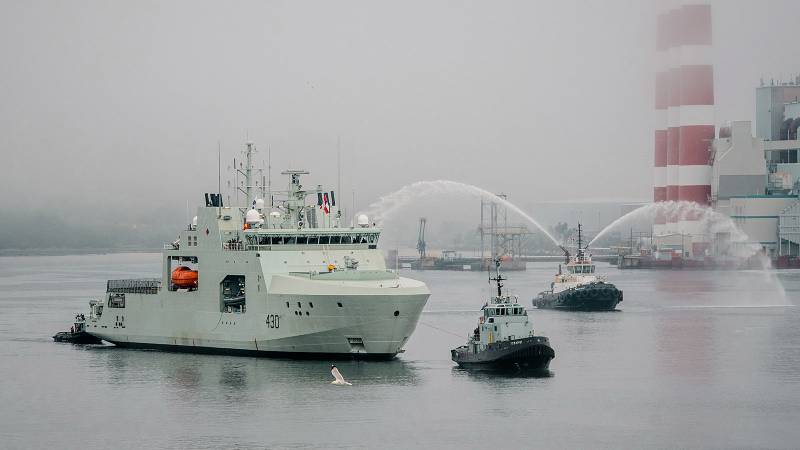
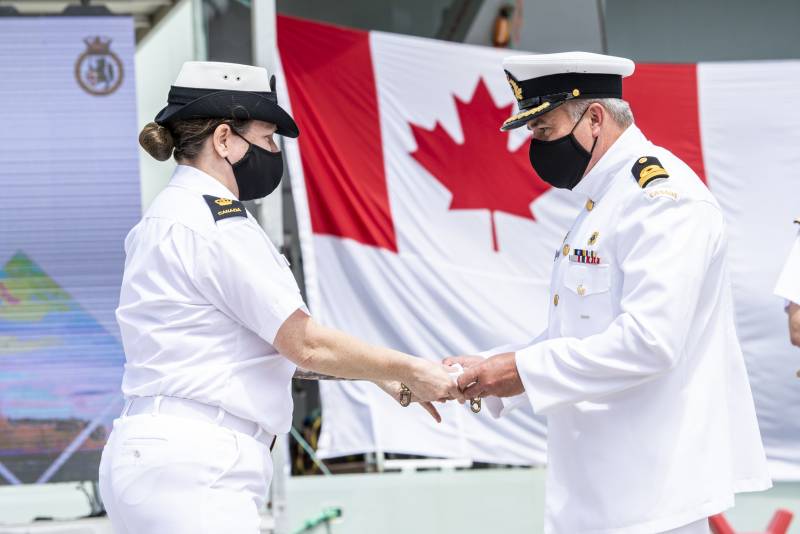
Information